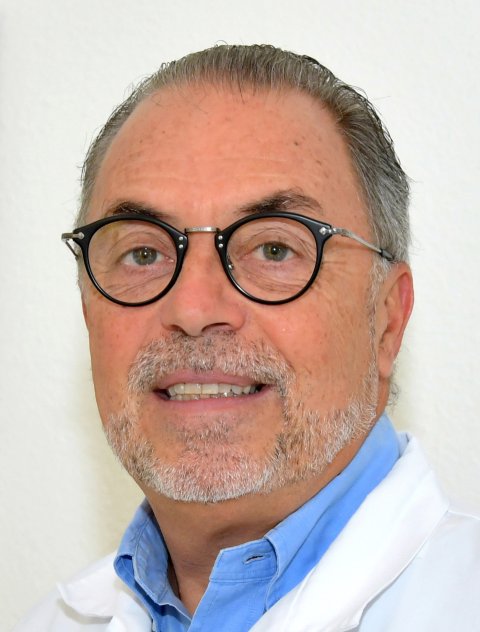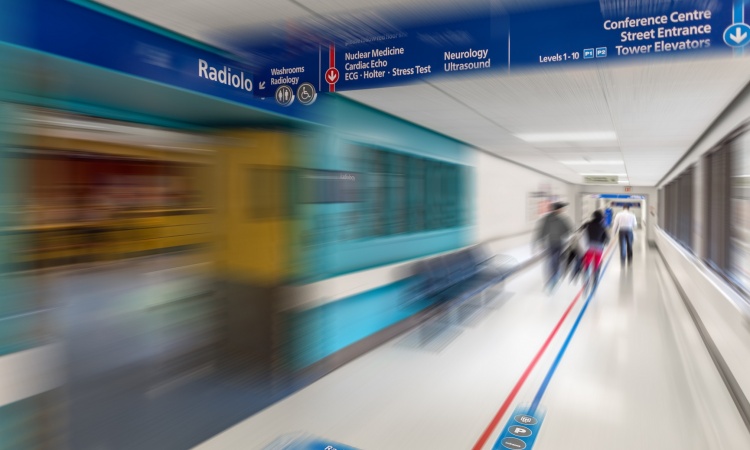
Image source: Adobe Stock/fizkes (environment); Adobe Stock/Gorodenkoff (radiology image)
Article • Take on teleradiology
Working from home as a radiologist: pros and cons
Leading radiologists have debated whether working from home is a blessing or a curse amid the evolving impact of teleradiology. In a hybrid ECR session in Vienna examining working from home in radiology, speakers discussed their own experiences, the advantages and disadvantages, the changes brought about with the coronavirus pandemic, and reflected on the results of a European Society of Radiology (ESR) survey on the subject.
By Mark Nicholls
Insourcing teleradiology
Osman Ratib, former chairman of the Department of Radiology at the University Hospital of Geneva, Switzerland, presented the ESR survey findings on insourcing teleradiology services among partners of the same organisation.
Differentiating between insourcing teleradiology services and outsourcing to external services, the survey – conducted by the ESR eHealth and Informatics sub-committee – posed questions to national societies and to ESR members/practising radiologists. Conducted in 2016, the survey aimed to gain a view of teleradiology and compare strategies and regulations in different countries. However, congress delegates were reminded that the coronavirus pandemic had accelerated adoption and deployment of teleradiology with new workflow trends.
Sharing workload

Professor Ratib said teleradiology is increasingly used across networks of healthcare institutions or radiology centres to share workload and reap benefits from the expertise of different radiologists. Some 60% of survey respondents agreed that insourcing – sharing workload among some radiologists being at home or working remotely – is beneficial.
Part of the survey centred on whether radiology will change the market or promote a shift toward teleradiology by institutions wanting to save money. Some 15.5% felt lower pricing of teleradiology enabled hospitals to save costs by outsourcing, while 32.9% said teleradiology business is causing a downward pricing for radiology services. Just under 30% of respondents felt radiology services had no influence on radiology prices.
Patient concerns
According to 15.7% of respondents, off-site radiologists do not have access to PACS/RIS and prior studies; 36.3% did not know what quality assurance systems were being used, and that two thirds felt referring doctors were satisfied with teleradiology, while 47.2% never had a situation where patients refused teleradiology.
Professor Ratib said the survey team was keen to see how patients viewed teleradiology. ‘In my personal experience,’ he said, ‘this has changed with the pandemic. Patients are much more concerned about who is doing what. If data are being analysed by a remote person or radiology service, they want to know.’
The survey concluded that insourcing and outsourcing are used in many of the National Societies’ countries and use is relatively balanced, ‘with insourcing being used slightly more than outsourcing.’ It is perceived, he continued, that insourcing mainly has a positive impact (60%), but for outsourcing, only 17 % perceived the impact to be positive.
Recommended article

Article • Imaging workflow challenges
The long-term impact of Covid-19 on teleradiology
The coronavirus pandemic created unprecedented upheaval and challenges within health systems, economies, and society. In hospitals, new ways of working had to evolve. Social distancing led to virtual consultations and teleradiology has found an added dimension. We asked three radiologists about the relevance of teleradiology during the epidemic, and what the future holds.
Virtual visits and other Covid changes
Professor Ratib discussed his experiences of teleradiology across a hospital network in Switzerland, where radiologists pointed to it offering coverage for “on call”, sharing subspecialty radiology expertise, and balancing workload among sites. ‘That accelerated dramatically when we went through the pandemic and had to separate team into three groups,’ he continued.
That saw one team dealing with Covid cases with a complex workflow on-site; a local team to do ultrasound for non-Covid patients and outpatients and inpatients; and a team working from home offering teleradiology coverage. During the pandemic, explained Professor Ratib, staff radiologists were equipped with PACS workstations at home, and that extended the remote interpretation of daily routine studies from home. ‘That reinforced common standard protocols on all sites,’ he added. ‘Patients were also “growing accustomed” to virtual visits during the pandemic.’
Home-work challenges
Working from home makes it difficult to teach medical students and share knowledge, and you do not encounter the patients for whom you are caring
Richard Gunderman
While teleradiology has an established role, he believes obstacles remain, including a lack of harmonization of legislation across borders and of compliance with standard imaging protocols, an absence of patient-centric data storage of historical studies, and limited implementation of quality control programs and audits.
Meanwhile, Richard Gunderman, Professor of Radiology at Indiana University, Indianapolis, US, said working from home has ‘blessings’, such as the opportunity to subspecialise, adapt to changes in workflow, and offer family benefits. But he warned of disadvantages associated with the distractions, falling levels of motivation and a blurring of boundaries between work and home life. ‘There is no camaraderie and collegiality, and it is not so easy to share cases in real time with radiology colleagues in the same reading room,’ he said. ‘Working from home makes it difficult to teach medical students and share knowledge, and you do not encounter the patients for whom you are caring.’
Working remotely
Delegates to the session, chaired by Professor Elmar Kotter, heard that radiologists working from home miss out on interaction with other healthcare professions.
Effective communication was also important, and while Professor Deniz Akata, Head of the Radiology Department at Hacettepe University in Ankara, Turkey, echoed the issue of family distractions for radiologists working from home, she underlined the importance of effective written communication – such as texting – between remote staff and other members of the team.
David Labajo, Vice-president Digital of GE Healthcare, said Covid completely changed the perception on whether it is possible, or not possible, to work remotely. ‘I use the term “work remotely” as opposed to “reporting remotely” because many think a radiologist’s work is only looking at images, but it is much more than that. It is not only a need to make images available at home or a distant site, but also to be sure that the radiologist can access all the information they need, with the right tools to make the right diagnosis and the right reporting. This is about having access to patients’ clinical history, but the technology is there to achieve this.’
Profile:
Professor Osman Ratib is the former chairman of the Department of Radiology at the University Hospital of Geneva and now runs a company, Agora Care, developing new platforms for teleradiology and medical imaging.
21.07.2022










